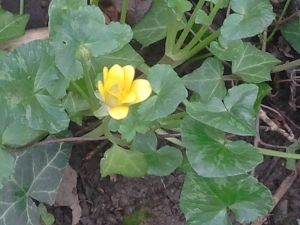Celandines (aka Ranunculus ficaria) are normally one of the first signs of spring, emerging around Easter time when the trees overhead have no leaves and the ground around is clear of competitors. Celandines usually flower between March and May each year.
However, even I was amazed to find celandines in bloom in Bristol on 3rd January on the Bristol & Bath Railway Path at Clay Bottom while coming back from a shopping trip to Fishponds. Gilbert White, the celebrated naturalist who chronicled the natural history of Selborne in Hampshire in the 1800s, only managed to record them as early as 21st February

Is this unprecedentedly early blossoming yet more evidence of climate change? Comments welcome.